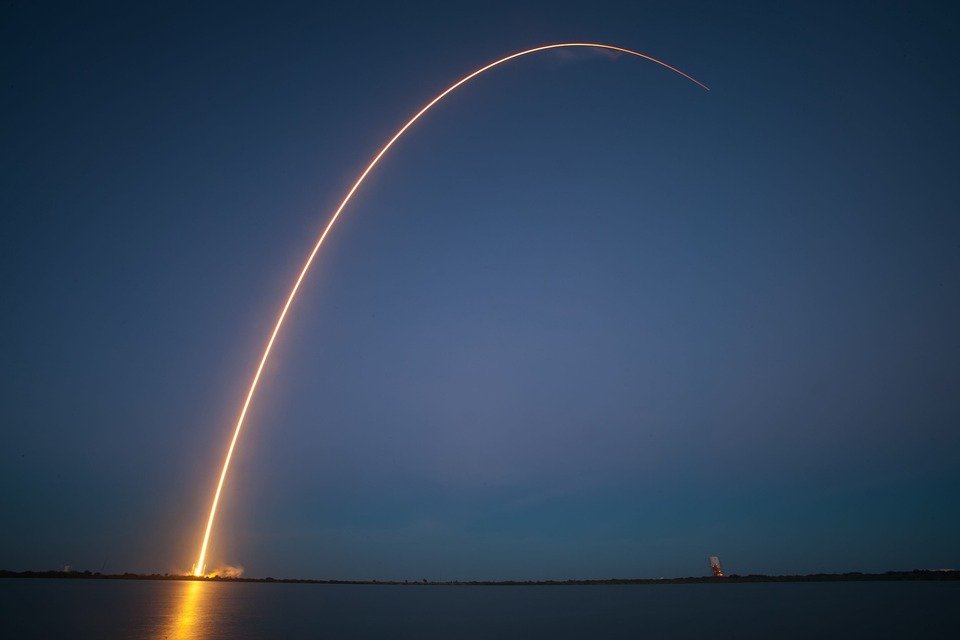Dr. Moser, how did you personally enter the field of space technology?
I had always been interested in space, the moon and the stars – and in technology. I went to a technical high school and after graduation I initially attended a career orientation session at a handcraft company. When it came to deciding what I wanted to study, I came across the course in aviation and space technology in Stuttgart, where I commenced my studies.
During my studies, I completed a practical semester at the German Space Agency (DLR) in Lampoldshausen. This entailed rocket engineering and allowed me to apply my practical skills. I found this so interesting that I decided to study combustion technology and to specialize in space flight. By the time I was working on my thesis, I knew that I wanted to enter industry.
What was your reason for joining OHB?
At an air show in Paris, I came across OHB and its subsidiary LuxSpace in Luxembourg which develops small satellites. Originally, I wanted continue working on rocket engineering.
But then I thought that given that I have the choice of working on a single element of a large rocket or building an entire satellite, I will opt for the satellite.
I joined LuxSpace in 2008 while I was working on my thesis. At that time, we were only a very small company with around 20 employees and offices in containers on the premises of one of the largest operators of telecommunications satellites.
After I completed my studies I remained at LuxSpace, where I was able to work on an experiment for the International Space Station ISS. Generally speaking, we initially work on small items in conventional space engineering and then on unmanned missions before reaching the supreme discipline of human space flight. In my case, it was the other way round as I had the great fortune of being able to gain practical experience and to work on exciting new projects.
What makes LuxSpace so special?
LuxSpace was a small company that set itself the goal of implementing things quickly in contrast to the way that large space projects are normally run. These days, this is called “New Space” but this has always been the way that LuxSpace operates with the result that projects were completed relatively swiftly without any bureaucratic constraints. Obviously, this approach has its own challenges: when I started out, our offices, workshops and laboratories were housed in containers. I didn’t have any telephone, computer or business cards and had to buy my own paper for the printer.
Things continued in the following three years that I was with LuxSpace. During this period, we started work on engineering and constructing the two VesselSats, the first satellites to be assembled in Luxembourg. They were used by Orbcomm for maritime surveillance and security via the ships’ Automatic Identification System (AIS). This marked the culmination of our group work in the containers in which our small team handled all work themselves.
What consequences do the methods of New Space have for the work with project partners?
After the completion of the two Vesselsat projects, LuxSpace embarked on a very large project with the European Space Agency ESA. This was a learning process for both sides. It was the first time that ESA had worked with industry to develop inexpensive microsatellites. ESA was accustomed to very rigid processes which had emerged over decades for programs such as the ISS and the Space Shuttle. With our relatively small development budget and the costs of our satellites, we had previously worked on an entirely different scale. For cost reasons alone, this makes it necessary to apply completely different processes.
With the new Triton-X program, we are going one step further in our joint activities by reducing bureaucracy and replacing it with greater transparency.
We are granting ESA staff an exclusive view of our daily routines, all our tools and our calculations on a real-time basis. In this way, we are able to convince our project partner that what we do has a solid foundation. All it needs to do is look at what we are doing.
The purpose of the new Triton-X platform is to develop applications which ensure swift market access and inexpensive availability. What is more, they can be produced in series. Conceivable applications particularly include satellite communications and earth observation.
In what ways does “new space” differ from “old space”?
“Old space” goes to great lengths to avoid failures, true to the motto that “failure is not an option”. In my view, the basic assumption underlying New Space is to get away from this mantra. Instead, an attempt is made to estimate the residual risk as exactly as possible and to take appropriate measures to manage it.
What does this specifically mean?
For example, this may involve speeding up the testing process by launching a satellite even if you are not 100% certain that all potential sources of errors have been factored in. Instead, you can say: “If the satellite has a problem, we still have a reset button down here and can relaunch it.”
Like a computer that has frozen up?
Precisely. A further aspect involves taking account of errors during the planning phase. If you allow for this possibility, you can work on a completely different basis even in the least favorable case of the satellite proving to be faulty. From the outset, we plan our activities to factor in the possibility of a complete failure of the satellite. Despite this, the system still remains fully functional.
Can you explain this by reference to a New Space project? Perhaps the Triton-X, for which you are the project manager?
With the Triton-X project, we are implementing a new multifunctional platform for microsatellites. It is designed for commercial applications for which the budget and time-to-market are decisive. Possible applications include communications or earth observation.
What benefits do microsatellites offer?
The possible added value arises from an improvement in navigation systems, more precise weather forecasts or more recent satellite images of the earth. Microsatellites are now also on the rise in these areas as they are relatively inexpensive. So you get more satellites for the same money and can distribute them in orbit to collect more recent images of the earth.
So you’re building the satellites but also handling the data and services?
The use of satellite data for applications and services is typical of New Space. Satellites are a necessary technology for many New Space start-ups but ultimately what they want is data. LuxSpace originally started out with data but did not become a satellite builder until much later. Today, we are active in both areas: We build satellites but also analyze and market datastreams primarily generated from maritime and earth observation applications. An example of a datastream is the expected time of arrival of the container ship. It is totally irrelevant for the customer if this data is derived from ground-based equipment or from space. All he wants is good data.
Will it soon be possible for anyone to send their own satellites into space?
(Laughs) I am asked this very frequently. And wouldn’t it be lovely? I would have my own satellites for television, Internet and endless telephony. Unfortunately, the answer is “no” as this is not how things work, of course.
Why is it wishful thinking?
First of all, you need to place the satellite on top of a launcher. And who is supposed to do this? And who will sort out any problems that may arise? These matters are currently governed by international treaties.
Then there is the problem of space debris, which is increasingly growing in importance. Currently, there is no international law similar to international marine law governing these questions.
This will doubtless change in the future. Entirely new and unexpected laws will be needed, e.g. a legal framework for mining rights on interplanetary bodies such as asteroids.
So, prospects are exciting. What does the future hold for LuxSpace?
We are attempting to preserve our pioneering spirit. I consider this to be very important. This is why I am particularly anxious to arouse the interest of young people – school students, undergraduates and postgraduates – in all the things that we are doing. The best way of doing this on a hands-on basis. With 3D printing, you can quickly make your own designs tangible in the literal sense. This is characteristic of LuxSpace. In this way, you can develop a satellite, perform and analyze the development tests, assemble the satellite and then place it on the tip of a launcher all within a short space of time, perhaps six months or one or two years.
That way career starters can experience the full life cycle of a satellite within in a very short period. I don’t think that this is always possible in this form at other companies. This also involves a great deal of responsibility, which is why fasciation for and a very strong interest in space are crucial prerequisites.








